Is it time to brush up your Shakespeare?
Welcome to the Renaissance! Let’s take a deep-dive into these Shakespearean times of Something Rotten!, shall we?
William Shakespeare
William Shakespeare was born in Stratford-Upon-Avon, England, in 1564. He was the son of John and Mary Shakespeare. His father was a prosperous businessman, the owner of a leatherworking shop, and was active in the city government of Stratford. Shakespeare would likely have attended the grammar school in Stratford, where a typical curriculum of the time would have included reading, writing, rhetoric, basic arithmetic, Latin, and possibly Greek. Shakespeare married a woman named Anne Hathaway when he was 18. Shakespeare and Anne Hathaway had 3 children, twins Hamnet and Judith and daughter Susannah. Hamnet died when he was 11. In the late 1580s or early 1590s, Shakespeare moved to London to work in the theatre there. Anne and the children maintained their permanent residence in Stratford. In London, Shakespeare performed as an actor as well as writing plays. He was a financial sharer in the theatre company called the Lord Chamberlain’s Men, which later became the King’s Men when King James I ascended to the throne of England. Shakespeare also authored several long narrative poems, and 154 sonnets. Shakespeare gained a considerable amount of wealth from his writing, and was able to purchase a large home in Stratford. He died at home in Stratford in 1616. Some of his plays were published in single volumes during his lifetime, but the first “Complete Works of Shakespeare,” often referred to as the “First Folio” was published by two actors in his company in 1623.
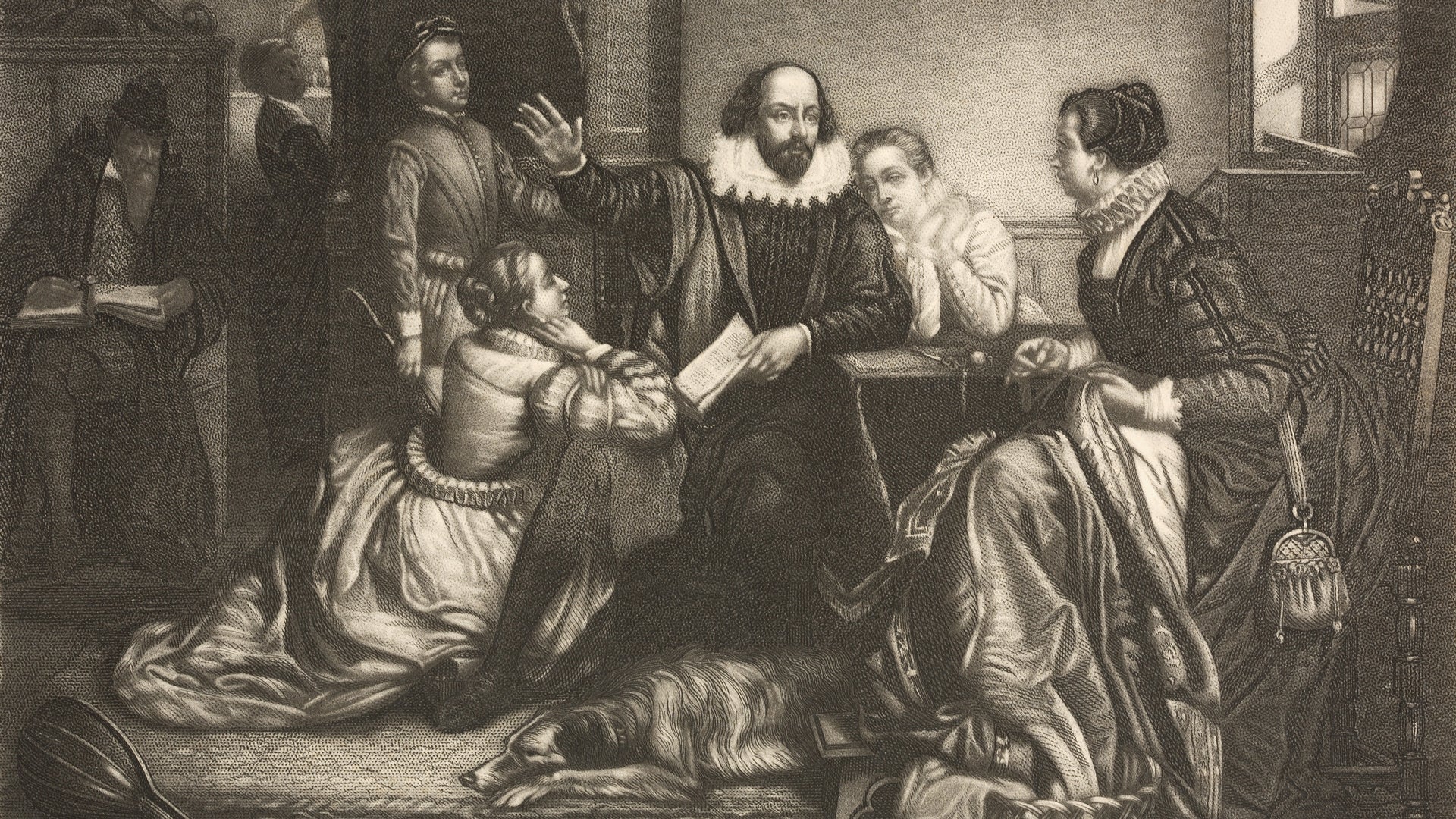
Shakespeare, center, history.com
The London Theatres
Beginning in the 1570s, there was a boom in the construction of purpose-built playhouses in London. Along with that boom in playhouse building came a boom in playwriting to meet the demands of London audiences. William Shakespeare arrived in London sometime in the late 1580s or early 1590s. During Shakespeare’s writing career, dozens of other playwrights also were writing plays for the London theatres. The lyrics of “Welcome to the Renaissance” refer to several of these playwrights: Thomas Dekker, John Webster, Ben Jonson, Christopher Marlowe, Thomas Kyd, and Thomas Middleton. Play performances were popular entertainment for the citizens of London at that time in the same way that blockbuster movies are for our own time period.
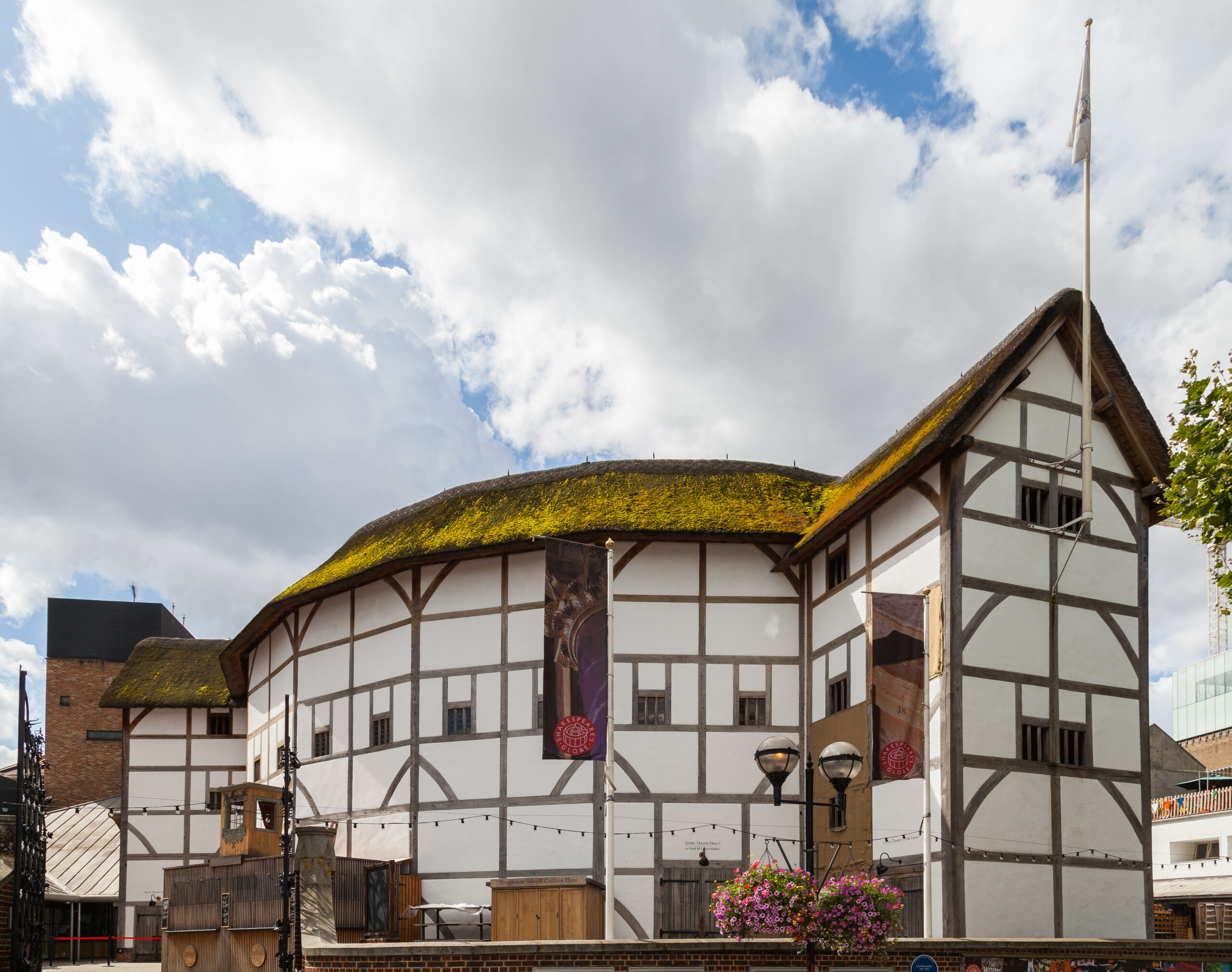

A look at the interior and exterior of London’s Globe Theatre today
The Acting Companies
The acting companies in Early Modern London, such as the Lord Chamberlain’s Men and the Admiral’s Men, were required by law to have a patron from among the English nobility, like Lord Clapham in Something Rotten!. The actors who were members of a company were financial sharers. They paid a share to join the company and then received a share of box office revenue. The Lord Chamberlain’s Men, the company where Shakespeare was an actor and the resident playwright, was managed by two brothers, Richard and Cuthbert Burbage, which might part of the inspiration for the Bottom brothers in Something Rotten!.

Jake Bieniewicz and Joey Parks play Nigel and Nick Bottom in Civic’s production of Something Rotten!
Women on Stage
For many years, historians have stated that it was “illegal” for women to perform on stage in Elizabethan England, and Something Rotten! follows this premise, including a reference in the notes at the beginning of the play. More recently, scholars like Jessica Schiermeister and Fiona Ritchie have pushed back on that assertion. There was not, as far as any scholar has been able to discover, an individual legal statute explicitly declaring that women could not perform on stage. In fact, women did perform in amateur performances such as court masques and religious pageants. There was, however, a strong tradition and convention of professional acting companies not allowing women, but having the women’s roles portrayed by boys. It is possible that a woman performing professionally could have been charged under other existing laws with something like public indecency, or even a violation of sumputuary laws, which regulated clothing according to social status. There would also have been very strong societal opposition to professional women actors, as women taking money to display themselves on stage would potentially have been seen as a form of prostitution. For more on women actors in the Elizabethan and Restoration eras, see Fiona Ritchie’s article HERE.
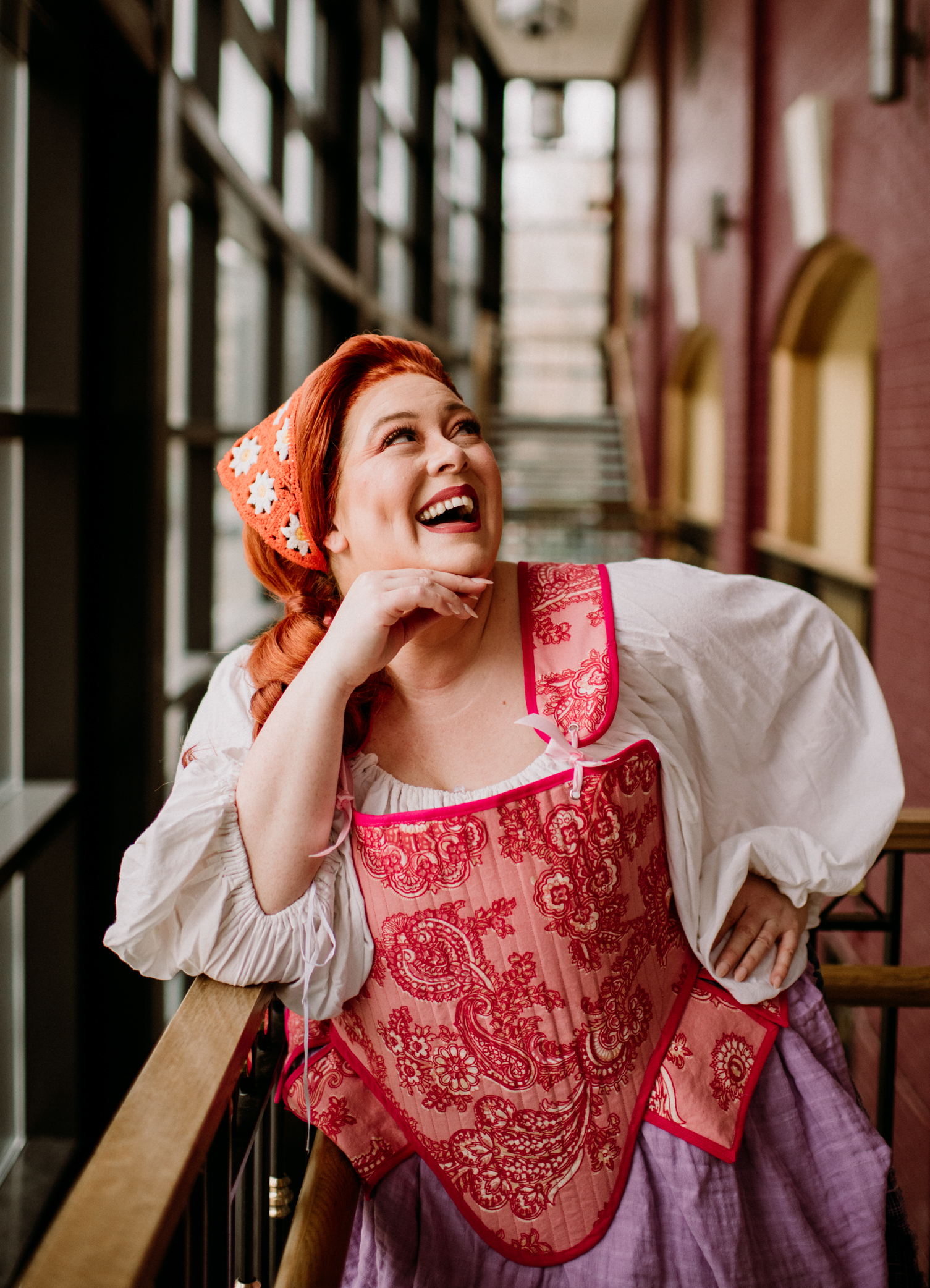
Noddea Skidmore plays Bea Bottom in Civic’s production of Something Rotten!, a woman who wants to be on stage performing in plays
The Puritans
Not everyone in London loved theatrical performances. One group of people who consistently objected to the ongoing increase in theatrical performances was the religious group called the Puritans. The Puritans were English protestants who sought to purify the church in England. Their many objections to theatrical performance (which are documented in letters which many Puritan leaders sent to Queen Elizabeth’s royal government, as well as to the government of the City of London) included the fact that theatre is essentially a lie, where people pretend to be something they are not; that the theatre performances drew in criminals such as pick-pockets and prostitutes; that audience members would imitate immoral actions that they saw in plays; and that the actors engaged in cross-dressing (because the professional acting companies did not include women actors and the women characters were therefore played by male actors).
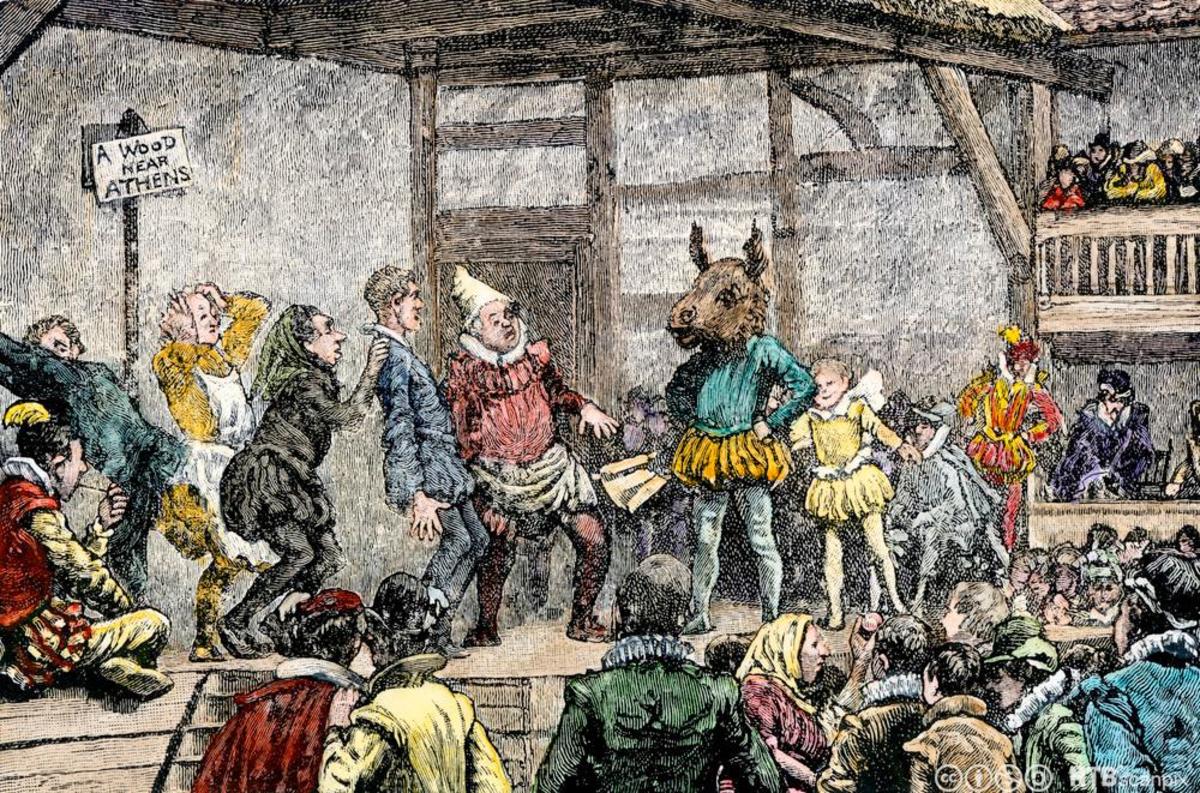
The Puritans considered actors to be agents of the Devil
Timeline
The authors set Something Rotten! in the year 1595. The first records of Shakespeare being in residence in London, rather than Stratford, are from 1592, so that places Something Rotten! near the beginning of his writing career. No historical record exists of the first performance of Shakespeare’s Romeo and Juliet, but it first appeared in print in 1597. Since plays typically were not published until after they had first been performed, it is very likely the play had been performed publicly before that date. Shakespeare’s Richard II does seem to have first been performed in the fall of 1595.
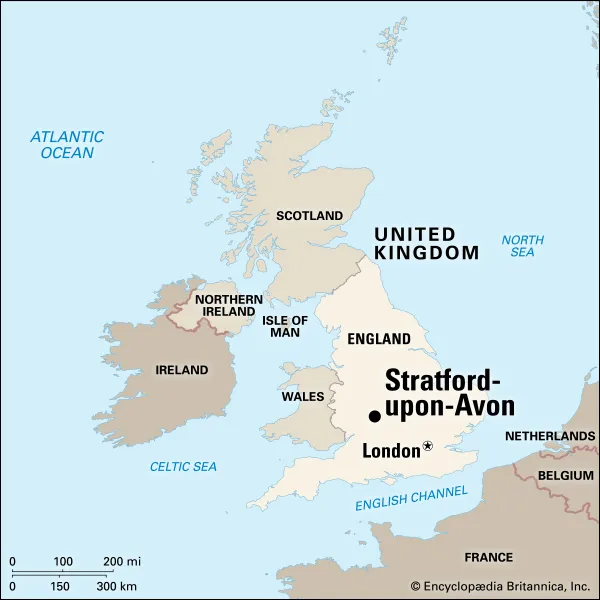
Stratford-upon-Avon lies roughly 100 miles (160 km) NW of London, England.
Exploration and Colonization of the New World
Something Rotten! does take liberties with the timing of English colonization of what is now Virginia. Historically, the first successful English colony (successful for the European colonists, 3 anyway) in North America was the Jamestown Colony, established in what is now Virginia in 1607. Before that, a colony on Roanoke Island off what is now North Carolina was established in 1587, but the colonists all disappeared under mysterious circumstances. The Plymouth Colony, in what is now Massachusetts, was founded after Shakespeare’s lifetime, in 1620. During the age of colonization, acquiring land in the “New World” with the plan of harvesting crops from it was a way that nobles in need of money, as well as commoners seeking to rise in social status pursued those goals. Criminals also sometimes were sent to the colonies in North America after those colonies had been established. The Something Rotten! authors have compressed the time of historical events in order to include this plot point when the Bottom brothers travel to America at the end of the play.
Specific Historical References in the Script
Francis Bacon — Francis Bacon was a philosopher, lawyer, and member of Parliament who lived from 1561-1626. In his philosophy, he promoted modern scientific thought based on observation. The use of ice and snow to preserve meat in an early form of refrigeration is often credited to him, and legend has it that his death came about from pneumonia that he caught while catching a chicken which he then packed in snow and ice after it was butchered.
The Black Death — Nick and Nigel’s initial subject for a musical. The Black Death was the common name for the bubonic plague, which had devastated the European continent during the 1300s. Between 1346 and 1353, the Black Death killed as many as 200 million people. Smaller outbreaks continued during the Early Modern period, and occasionally caused the closure of the London theatres. Several of Shakespeare’s plays, including Romeo and Juliet, have references to plague outbreaks.
Elizabeth I — the term “Elizabethan” appears in multiple places in the script. Elizabeth I was the queen of England from 1558-1603.
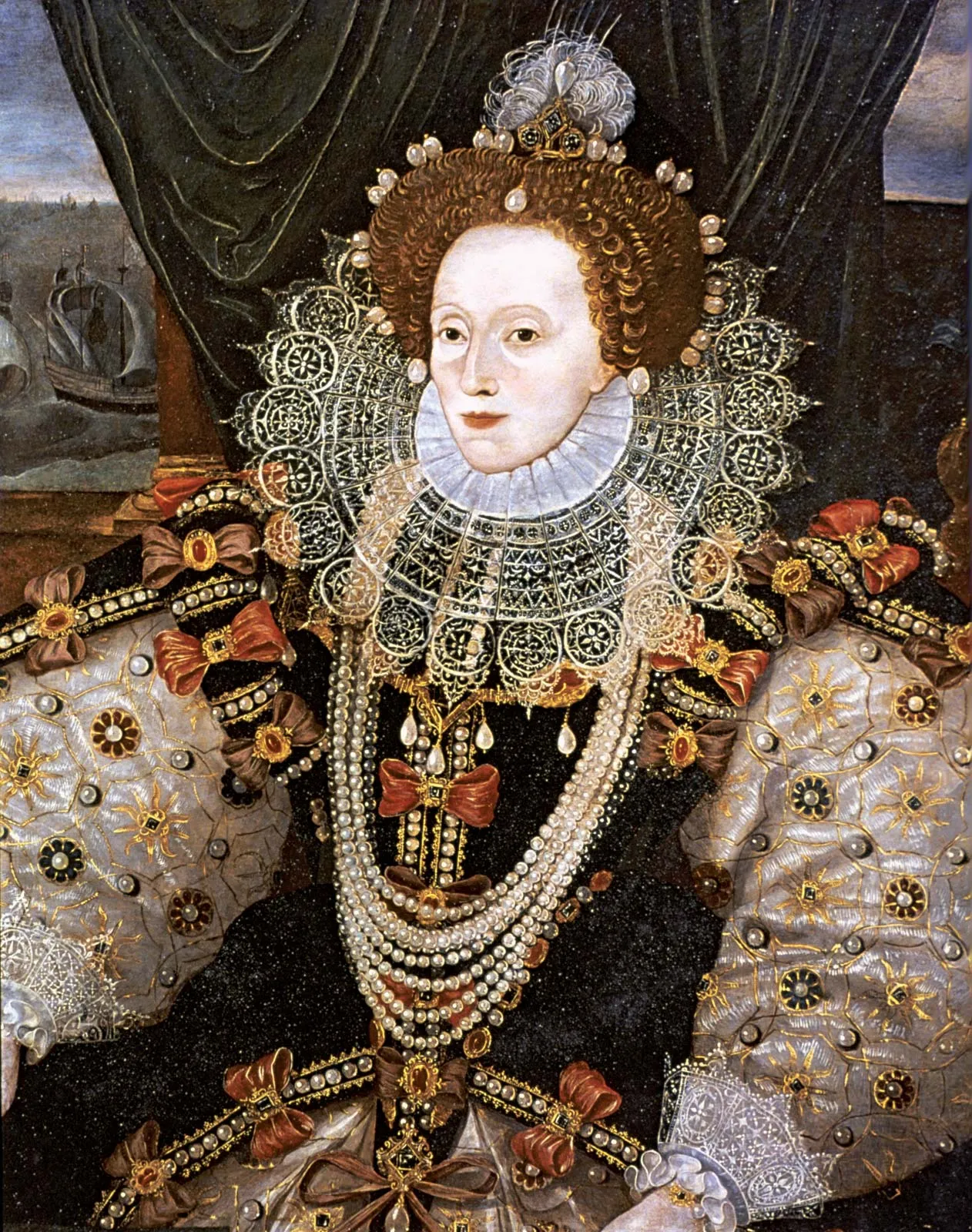
Elizabeth I ruled at a time when England asserted itself vigorously as a major European power in politics, commerce, and the arts
Nostradamus — Thomas Nostradamus is a character in Something Rotten!. The historical Nostradamus lived from 1503-1566, and was an astrologer in the French royal court. Nostradamus published his prophecies in a book called Centuries, which many people still identify as having predicted events all the way into the 21st century. Thomas claims to be the nephew of the original Nostradamus.

Nostradamus
Playwrights — the script mentions several English playwrights of the late 1500s and early 1600s, including Thomas Dekker.
Poets — the script mentions several English poets of the late 1500s and early 1600s, including Daniel Webster, Samuel Daniel, Philip Sidney, and Edmund Spenser.
Walter Raleigh — mentioned on pg. 4. Sir Walter Raleigh was an English explorer who lived from 1554-1618. He was at one time a close friend and ally of Queen Elizabeth, but his relationship with her deteriorated. When King James I came to the throne, Raleigh was accused by enemies at court of trying to dethrone the king. While these accusations were at first dismissed, King James eventually had Raleigh executed for treason in 1618.
Tudor — the term “Tudor” appears in multiple places in the script. Tudor is the family name of Queen Elizabeth I, and the reign of English monarchs Henry VII, Henry VIII, Edward VI, Mary I, and Elizabeth I is referred to as the Tudor Dynasty.
Tyburn — Tyburn was the main execution site for London prisoners in the 1500s and 1600s.
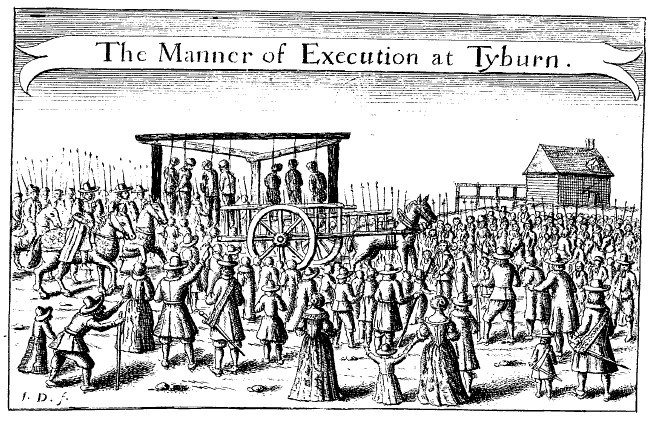
Tyburn execution site
References from Shakespeare’s Plays
Bea — character in the play. Bea’s name comes from Beatrice, the heroine of Shakespeare’s Much Ado About Nothing.
Toby Belch — the name Shakespeare takes when he is in disguise. Toby Belch is a character in Shakespeare’s Twelfth Night.
The Bottom Brothers’ Acting Company — characters appearing and mentioned throughout the play. The names Nick Bottom, Tom Snout, Peter Quince, Snug, and Robin Starveling all come from Shakespeare’s A Midsummer Night’s Dream, in which a group of amateur actors referred to as the “Rude Mechanicals” put on a play for the wedding of Theseus, Duke of Athens. In Midsummer, the character Nick Bottom is temporarily transformed into a donkey by fairy magic.
Disguise — several characters in the play go into disguise. Characters disguising themselves is a common trope in Early Modern plays. Bea’s male disguise mirrors Shakespearean heroines like Rosalind in As You Like It, Viola in Twelfth Night, and Portia in The Merchant of Venice, who disguises herself as a male lawyer to enter a courtroom in the play.
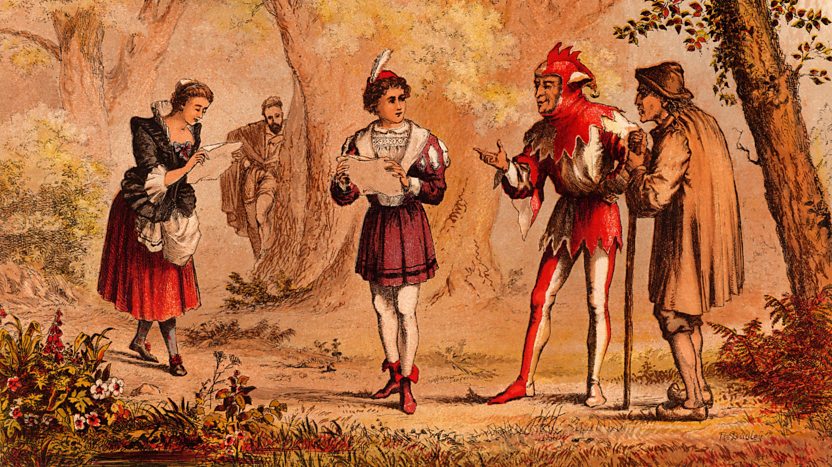
Shakespeare’s As You Like It features a cross-dressing character when Rosalind (centre) disguises herself as a boy called Ganymede.
Falstaff — The name of the magistrate in Something Rotten! comes from a character in Shakespeare’s Henry IV, Parts 1 and 2 and The Merry Wives of Windsor.
Hamlet — mentioned in multiple places in the script. Omelette is based on Thomas’ predictions of Shakespeare’s best play in the future, but many things about Shakespeare’s play get lost in translation. In Hamlet, the Prince of Denmark meets the ghost of his father, who asks Hamlet to avenge his murder. It turns out that the ghost was murdered by his own brother, who has now become the king. The plot of The Lion King closely resembles Shakespeare’s Hamlet, which is why in Omelette, the uncle is named Scar. Many lines from Hamlet appear in the Something Rotten! script, including “To thine own self be true” (song lyrics), “To be or not to be” and the following lines (pg. 99), “When sorrows come, they come not single spies but in battalions,” (pg. 108), “The serpent that did sting his life now wears his crown” (pg. 113), “Words without thoughts never to heaven go” (pg. 123), and “Good night, sweet prince” (pg. 125).
Lines from other Shakespeare plays — the script of Something Rotten! contains the most lines from Hamlet and Romeo and Juliet, but lines from other Shakespeare plays are also sprinkled throughout the script. These include the lines starting with “Let us talk of graves, of worms, of epitaphs…” (Richard II), “Oh, for a muse of fire” (Henry V), “All the world’s a stage” (As You Like It), “The tartness of his face doth sour the ripened grape” (Coriolanus), “The quality of mercy is not strained, it droppeth as the gentle rain from heaven” (The Merchant of Venice), and “this royal throne of kings, this sceptered isle, this blessed plot, this earth, this realm, this England” (Richard II). The script also contains the phrase “All’s well that ends well”, the title of another of Shakespeare’s plays.

Jake VanNeuren plays “Renaissance Rock God” William Shakespeare in Something Rotten!
Miranda, Rosalind, and Helena — appear briefly as minor characters. The names of Bea’s friends come from The Tempest, As You Like It, and either A Midsummer Night’s Dream or All’s Well That Ends Well.
Romeo and Juliet — multiple references to Romeo and Juliet occur in the play. Lines from Romeo and Juliet include “On my word, we’ll not carry coals, for then we should be colliers,” “Oh is there not pity sitting in the clouds that sees into the bottom of my grief?”, the speech starting with “But soft, what light through yonder window breaks” in Shakespeare’s performance, and “Do you bite your thumb at me, sir?”.
Portia — character in the play. Two characters named Portia appear in plays by William Shakespeare. One is the wife of Marcus Brutus in Shakespeare’s Julius Caesar. The other is the romantic heroine of The Merchant of Venice, who coincidentally appears in disguise as a lawyer to save the day in a trial scene in much the same way that Bea does in Something Rotten!.
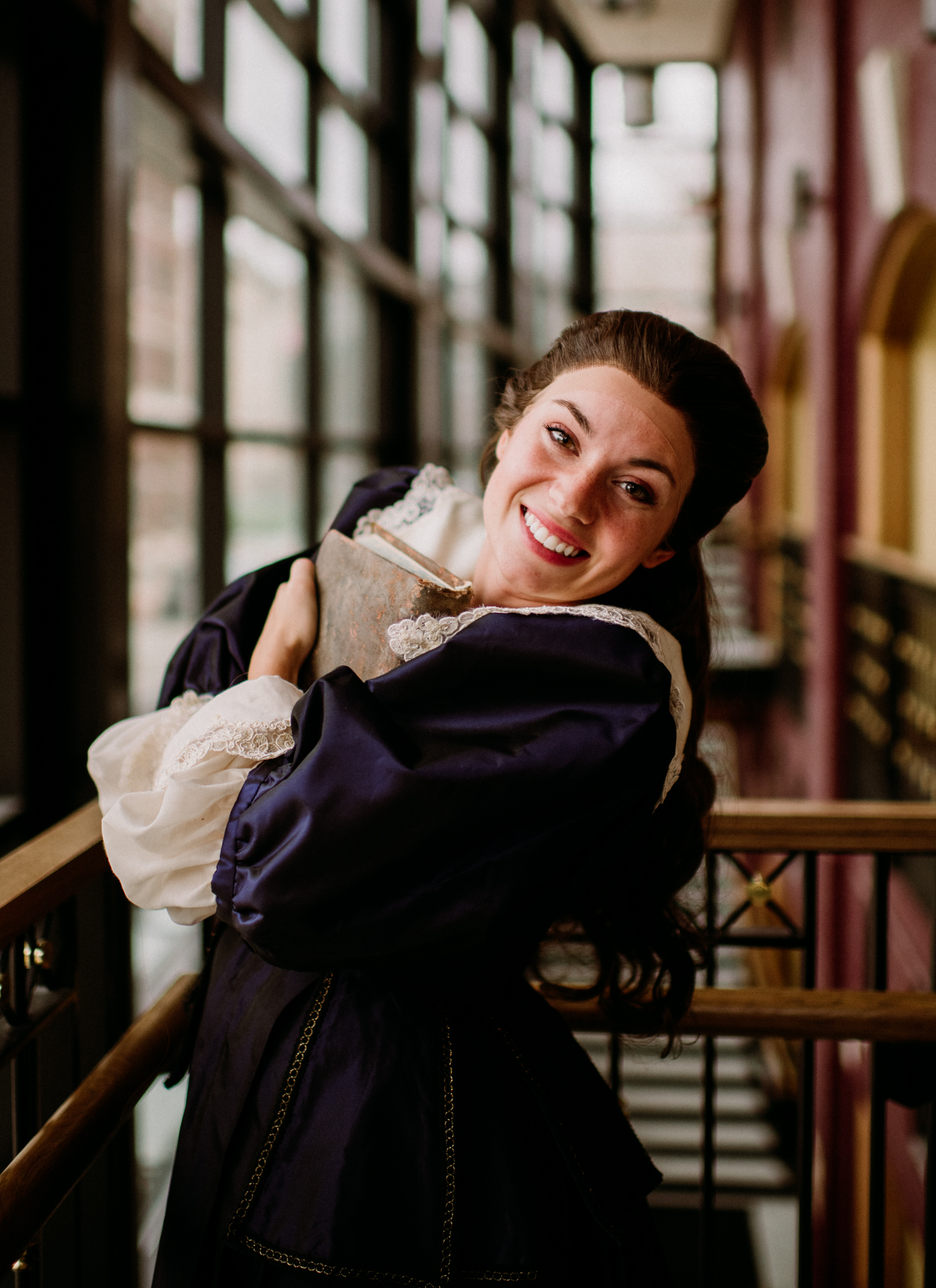
Ashley Isenhoff plays Portia in Something Rotten!
Shylock — character in the play. The name Shylock comes from Shakespeare’s The Merchant of Venice, in which the character Shylock is a Jewish moneylender in the city of Venice. After the title character of the play, Antonio, defaults on a loan, Shylock seeks revenge for Antonio’s previous cruel and anti-semetic behaviour towards him. In Something Rotten!, Shylock refers to moneylending as the only job Jews are allowed. This line refers to a belief in Medieval and Early Modern Europe that the bible forbid Christians from loaning money with interest, so that in some places, moneylending that supported commerce was traditional done by Jewish business owners. This practice gave rise to anti-semetic stereotypes about Jewish “usurers.” The reality of this issue is much more complex than depicted in either Something Rotten! or The Merchant of Venice. A good background article can be found HERE.
Sonnets — mentioned in multiple places in the play. A sonnet is a particular form of poem, fourteen lines written in iambic pentameter with a clear rhyme scheme. Shakespeare wrote 154 sonnets. Writing sonnets was a popular past time in the Early Modern period, even among people who were not professional poets. Sonnets are usually love poems, although they can also address other topics.
Soothsayers — the character of Thomas Nostradamus is a soothsayer. Soothsayers, or people who can predict the future, make appearances in multiple Shakespearean plays, including Julius Caesar and Antony and Cleopatra.
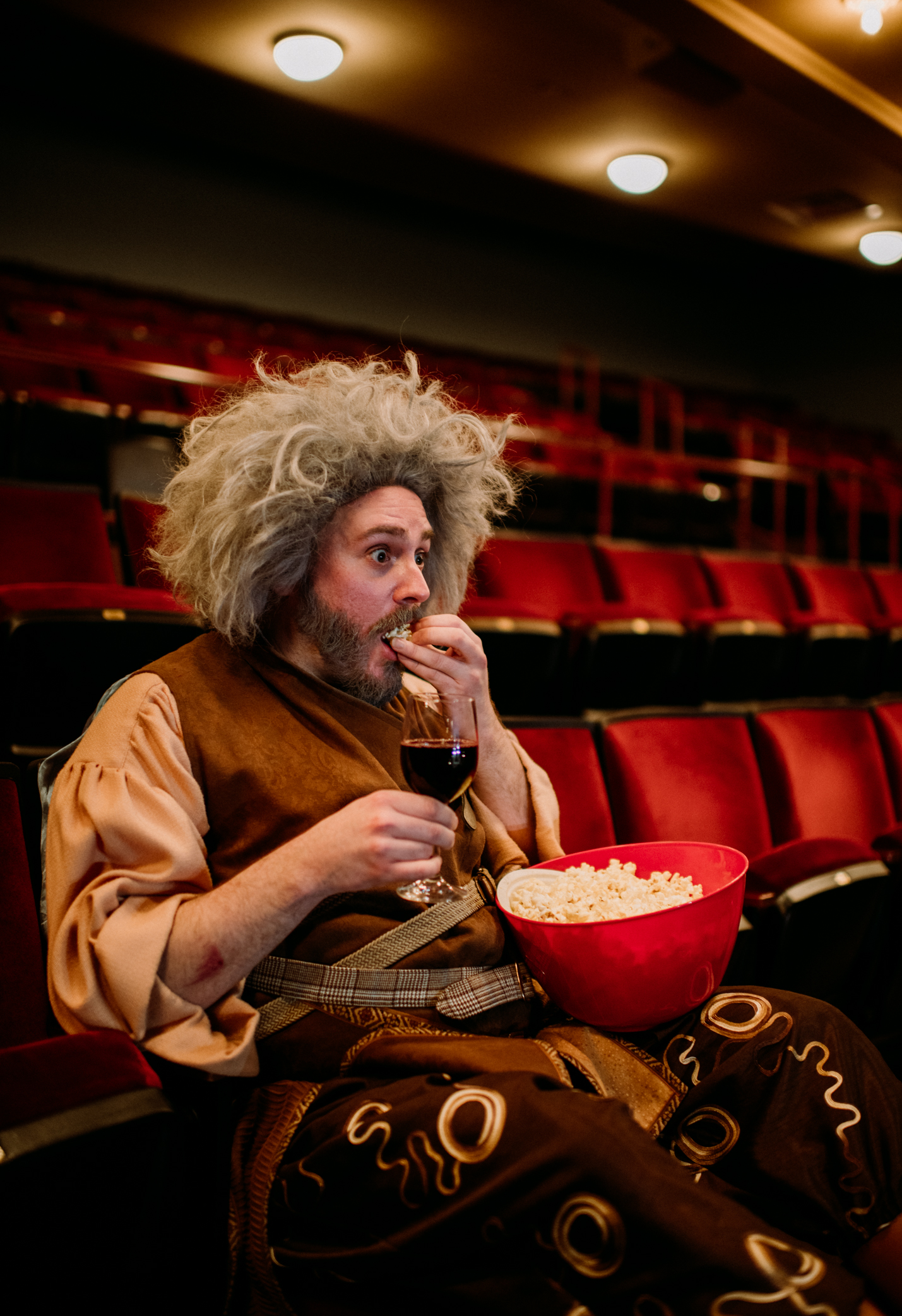
Matt Ablan plays Thomas Nostradamus in Something Rotten!
Come see Something Rotten! on stage at Grand Rapids Civic Theatre from April 28th – May 21st! Get your tickets today at https://www.grct.org/somethingrotten/.
Written by Katherine Mayberry, Something Rotten! Dramaturg.

